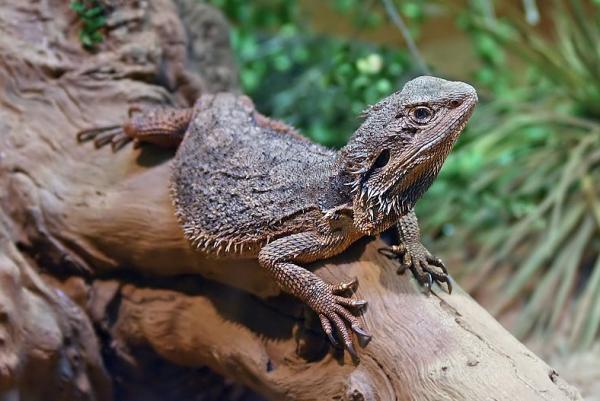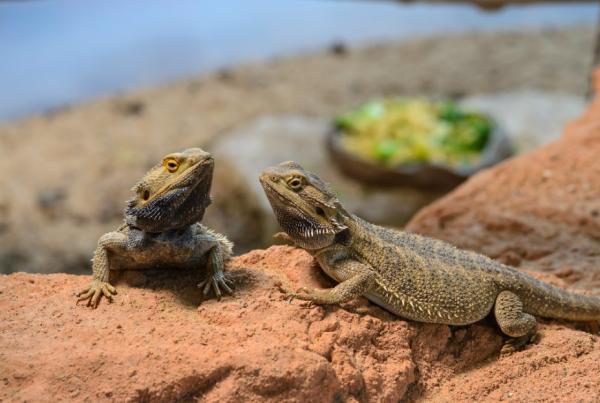The bearded dragon, also known as Pogona, is one of the most iconic wild reptiles of Australia and has become an extremely popular pet reptile worldwide. Its “dragon” appearance—scaly skin and spiny features—often leads people to think it’s dangerous or even venomous. In reality, bearded dragons are generally gentle and easy to care for. In this article, you’ll learn all about the bearded dragon’s physical features, habitat, diet, unique behaviors, and reproductive habits—making this the ultimate guide for reptile enthusiasts and pet owners alike.

Bearded dragons belong to the genus Pogona, which includes seven recognized species: P. barbata, P. henrylawsoni, P. microlepidota, P. minor, P. mitchelli, P. nullarbor, and P. vitticeps. Of these, P. vitticeps is the most common species kept as a pet. Their defining trait is the expandable throat pouch surrounded by rows of spiky scales, which can be dramatically displayed when the lizard feels threatened—hence the nickname “beard.”
Their base coloration is typically brown or tan but can vary according to their environment and temperature, with captive-bred varieties exhibiting red, yellow, blue, or pink hues. Bearded dragons are ectothermic (cold-blooded), so they can darken their color to absorb more sunlight and regulate body temperature.
Adult bearded dragons range from 30 to 60 centimeters (12–24 inches) in length, with a triangular head, robust tail, and strong limbs equipped with sharp claws for climbing and digging. Their body is flattened and covered in rough scales and spines, providing protection from predators.
With proper care in captivity, bearded dragons can live 10–15 years, making them a long-lived reptile pet.
Bearded dragons are native to Australia, with a wide range covering central and eastern regions. They are highly adaptable and can be found in a variety of habitats: deserts, woodlands, dry forests, savannahs, grasslands, and even the edges of farmlands. As semi-arboreal creatures, they are frequently observed basking on branches, tree trunks, rocks, or even fences and human-made structures.
To survive extreme temperatures, bearded dragons use special physiological strategies. During the hottest months, they may dig burrows and enter a dormant state known as aestivation (summer sleep). In winter, when night temperatures fall below 15°C (59°F), they enter brumation—a form of reptile hibernation—during which they barely eat but still drink water when necessary.

Bearded dragons are omnivorous opportunists, meaning they will eat whatever is available in their environment. In the wild, they primarily consume insects (such as crickets and beetles), small lizards, plant shoots, flowers, fruits, and occasionally small rodents. Their digestive system is well-adapted to store large amounts of food, which helps them survive periods of scarcity in arid environments.
In captivity, their diet should include live insect prey (like crickets and mealworms) alongside fresh vegetables and occasional fruit to ensure balanced nutrition. The bearded dragon is considered a classic example of a reptile adapted to both omnivory and survival in dry environments.
Bearded dragons display a wide range of social and defensive behaviors. When threatened or wanting to assert dominance, both males and females can inflate their beards and turn them black, while opening their mouths wide in a defensive posture. Males often add rapid head-bobbing to these displays, especially during mating season or territorial disputes.
One of the most charming behaviors is “waving,” where a bearded dragon stands on three legs and slowly moves a front limb in a circular motion. This gesture is used for recognition among individuals, to signal submission, or to acknowledge a dominant dragon—helping reduce unnecessary aggression. Juveniles use waving to signal inferiority, while adults may use it to avoid fights or as a distraction when hunting small prey.
Overall, bearded dragons are known for their calm temperament, which is a key reason for their popularity as pets.

The breeding season for bearded dragons in Australia runs from September to March (spring to summer in the Southern Hemisphere). Males reach sexual maturity between 1 and 2 years old, often displaying more prominent and darker beards than females.
During courtship, males perform color changes and head-bobbing to attract females. When the female is receptive, she signals with an arm wave. Fertilization is internal, and females can lay clutches of about 20–24 eggs in a burrow she digs herself. Females can lay multiple clutches per year and are capable of storing sperm for successive fertilizations without needing to mate again. Eggs incubate for 55–75 days before hatching.
The bearded dragon is not only a vital representative of Australian reptile biodiversity but also one of the most beloved pet reptiles in the world. Whether in the wild or in captivity, bearded dragons showcase remarkable adaptability, social intelligence, and survival strategies. For more fascinating facts about Australian wildlife and reptile care, be sure to explore our animal encyclopedia channel!
Bibliography
Periat, J. (2000) “Pogona vitticeps” Animal Diversity Web. Available at: https://animaldiversity.org/accounts/Pogona_vitticeps/
animal tags: Bearded Dragon
We created this article in conjunction with AI technology, then made sure it was fact-checked and edited by a Animals Top editor.